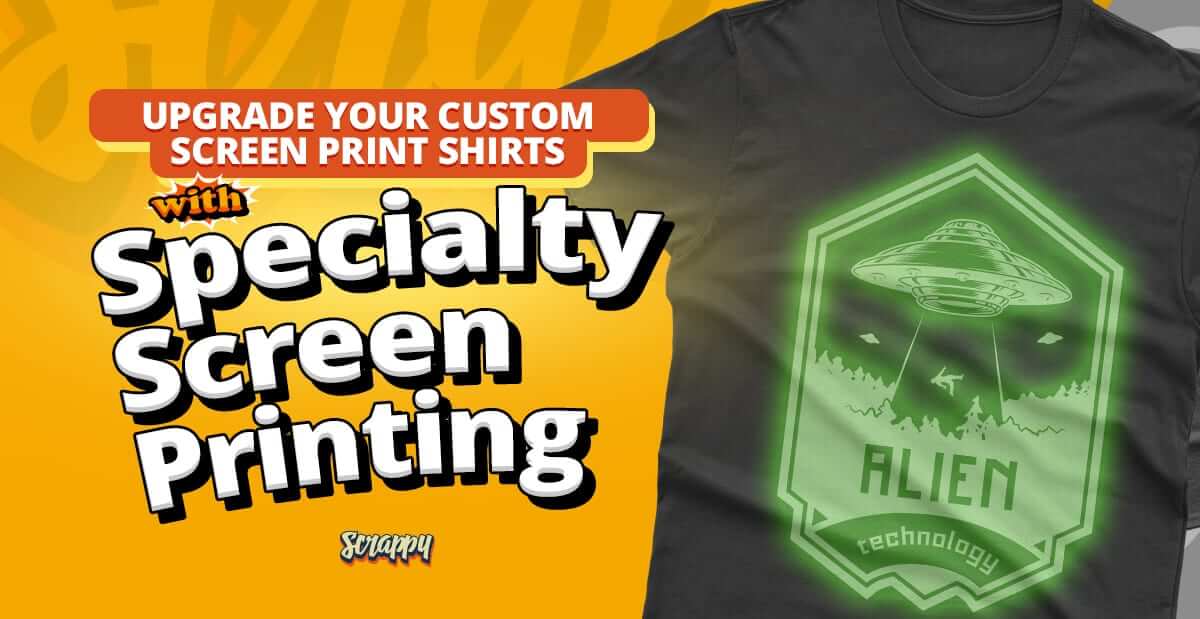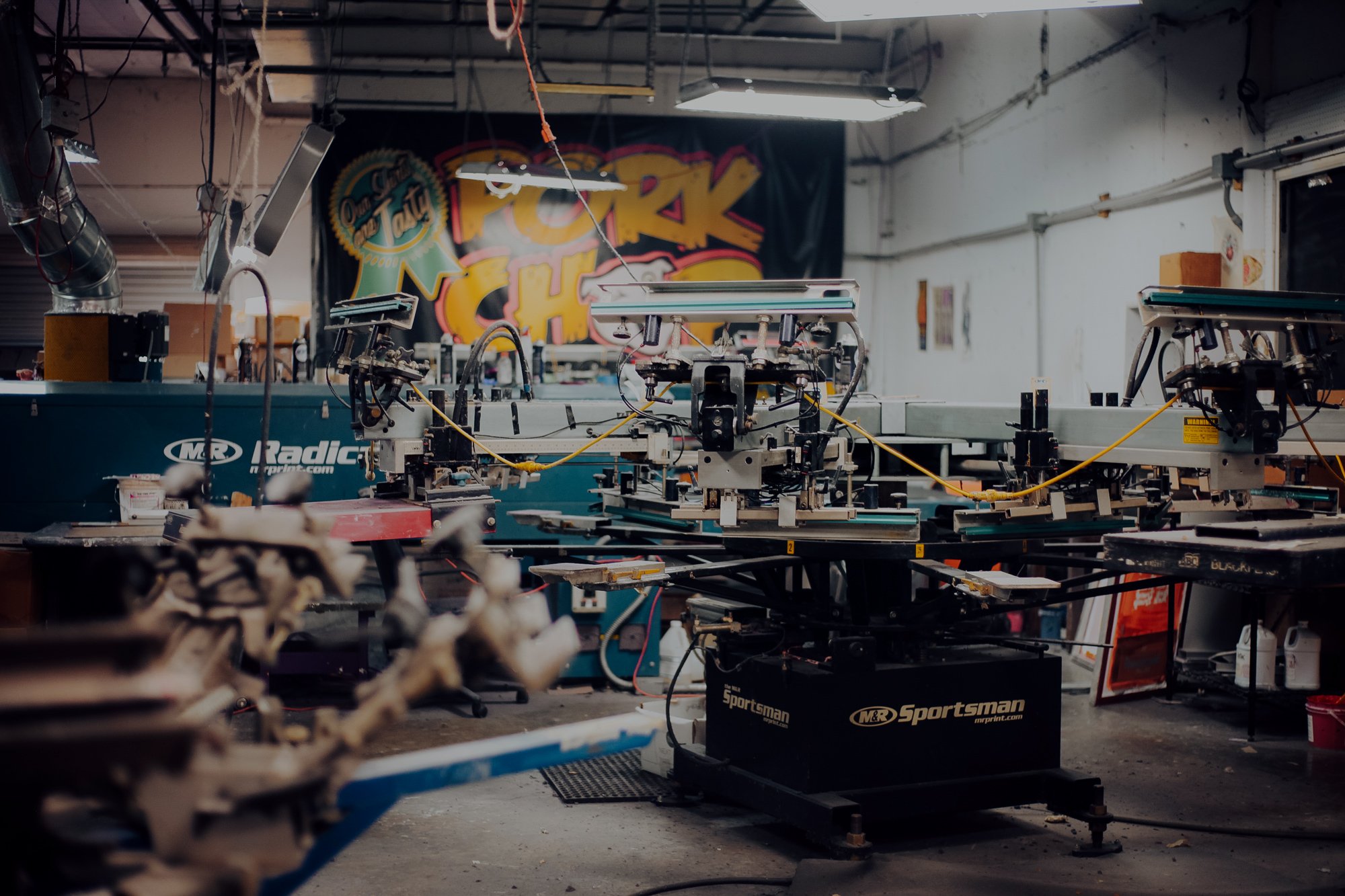Screen Printing Uncovered: Every Little Thing You Need to Learn About Tee and Garment Printing Strategies
If you have actually ever wondered exactly how those vivid styles end up on your preferred tee shirts, you remain in the right area. Display printing is a remarkable technique that integrates art with technique, supplying endless opportunities for creativity. Recognizing the principles, from equipment to ink choices, can significantly influence your outcomes. All set to explore the crucial aspects that make display printing an art type? Let's uncover the information that can boost your tasks.
The Basics of Display Printing: How It Functions
When you dive into display printing, you'll discover it's both an art and a scientific research. At its core, display printing entails developing a pattern, or display, that permits ink to pass through only in details locations (screen printing kit). You start by choosing your style and preparing your display with a light-sensitive solution. When you expose this solution to light, it solidifies, leaving your style as an adverse room.
Position the screen over the textile, after that utilize a squeegee to push ink with the screen onto the garment. Each action is crucial, and grasping them will certainly boost your display printing abilities, changing straightforward garments into special, meaningful items.
Kinds Of Screen Printing Methods
As soon as you comprehend the essentials of display printing, it's time to check out the numerous techniques that can boost your layouts. One preferred approach is standard screen printing, where ink is pressed through a stenciled screen.
Another alternative is plastisol printing, known for its resilience and vibrant colors, making it a favored for lots of brands. Experiment with halftone printing to produce slope results and detailed styles.
Important Equipment for Screen Printing
To achieve stunning outcomes in screen printing, having the appropriate equipment is fundamental. You'll need a durable screen printing frame, which holds the mesh that moves your design onto the garment. Next, invest in high-grade squeegees; these are crucial for using ink evenly throughout the display.
Picking the Right Inks and Materials
When picking inks and materials for display printing, you require to take right into account the sort of ink that functions best for your job. Consider material compatibility to ensure your styles look last and terrific long. Additionally, explore environmentally friendly ink alternatives to make your printing process extra lasting.
Types of Screen Inks
Selecting the appropriate screen ink is important for attaining vivid, long lasting prints that meet your project's demands. There are a number of types of screen inks to examine. Specialty inks, such as metal or glow-in-the-dark, can add one-of-a-kind results to your layouts.

Material Compatibility Factors To Consider
Comprehending material compatibility is vital for achieving high-quality display prints, especially because different materials react distinctively to various inks. When picking inks, take into consideration the fabric kind-- cotton, polyester, or blends. For cotton, water-based inks function well, using softness and breathability. Polyester, on the various other hand, often needs plastisol inks for better bond and vivid colors. You may require to use a mix of both kinds if you're printing on blends. Always test your inks on example material to ensure they stick appropriately and preserve shade integrity. Additionally, keep in mind that fabric weight and structure can impact the last result, so selecting the appropriate ink and product combination is crucial for your job's success.
Eco-Friendly Ink Options
Environmentally friendly inks are becoming a popular choice for display printers who intend to lessen their ecological influence while maintaining quality. When choosing inks, consider water-based inks, which are less harmful and less complicated to cleanse up compared to typical solvents. These inks bond well with materials, supplying dynamic outcomes without harmful chemicals. You could additionally explore eco-solvent inks that utilize fewer unpredictable natural substances (VOCs), making them a safer alternative for both your health and the world.
Additionally, search for inks made from renewable resources, such as soy or vegetable-based options. By picking the right inks and materials, you'll not just create stunning layouts yet additionally add to a much more sustainable printing procedure. Make the button, and your prints will mirror your commitment to the environment!
Preparing Your Layout for Screen Printing

Submit Style Needs
To ensure your layout looks lively and sharp on material, you'll require to pay very close attention to file layout requirements for screen printing. Beginning with vector documents like AI or EPS, as they can be scaled without losing quality. If you utilize raster photos, opt for high-resolution files, such as TIFF or PNG, preferably at 300 DPI. Avoid utilizing JPEGs, as they can lose clarity when resized. Also, see to it your layout has a clear history to avoid undesirable white edges on your prints. Ultimately, keep shade modes in mind; CMYK is conventional for screen printing, so transform your RGB develops accordingly. By following these standards, you'll set your artwork up for a successful print.
Shade Separation Techniques
Shade splitting up is a crucial step in preparing your design for screen printing, and grasping it can greatly enhance your print top quality. You'll need to break your layout right into specific colors, as each shade requires a separate screen throughout printing. This accuracy not only guarantees precise color representation however also simplifies the printing procedure.
Resolution and Size
Attaining the finest cause screen printing starts with guaranteeing your design has the best resolution and size. Ideally, your art work should go to least 300 DPI (dots per inch) for sharp, clear click to investigate prints. If you utilize reduced resolution, your end product could look pixelated and unprofessional.
When it pertains to dimension, consider the dimensions of your print location. Design your art work to match the final print size, ideally creating it in the real dimensions you'll be printing. This way, you'll stay clear of any unanticipated scaling concerns.
Always inspect your style in both vector and raster layouts. Vector graphics can be scaled without shedding top quality, making them excellent for screen printing. Preparing appropriately will assure your style looks outstanding on every garment!
Step-by-Step Display Printing Refine
Display printing is a dynamic procedure that permits you to develop vivid layouts on numerous surfaces. To get started, you'll need a display, emulsion, and your selected ink.
Put ink onto the screen and make use of a squeegee to press the ink through the stencil onto the fabric. Raise the display meticulously and let the print completely dry. You've effectively display published your layout.
Tips for Successful Screen Printing Projects
While you're diving into your display printing projects, bear in mind that preparation is essential to success. Start by gathering all your products-- inks, garments, displays, and squeegees. A clean workspace assists prevent undesirable errors, so tidy up prior to you begin.
Next, confirm your art work is high-resolution and appropriately sized for your garment. Test your screen for appropriate exposure and clean it completely to avoid smudges. When mixing your inks, adhere to the maker's guidelines to accomplish the appropriate uniformity.
During printing, apply also pressure with your squeegee for consistent results. Do not hurry; take your time to validate each print fulfills your standards. After printing, let your garments dry entirely before dealing with or packaging them.
Lastly, constantly keep a sample of your benefit future recommendation. In this manner, you can examine your development and enhance your techniques in time. Delighted printing!

Often Asked Concerns
Exactly how Lengthy Does It Take to Establish up a Screen Printing Task?
Establishing a screen printing task normally takes about thirty minutes to an hour. You'll prepare the screens, mix inks, and adjust the press. The time differs based on intricacy and experience, so remain organized!
Can I Print on Different Material Types Utilizing the Exact Same Technique?
Yes, you can publish on various textile kinds get redirected here using the exact same technique, yet you'll require to readjust your inks and settings. Some materials soak up ink differently, so experimenting assurances the best results for every material.
What Prevail Blunders to Prevent in Display Printing?
When display printing, stay clear of usual errors like using the wrong ink, disregarding correct exposure times, or missing pre-press checks. Always examine your arrangement and keep tidy displays to ensure high quality outcomes each time.
Exactly How Can I Effectively Clean and Preserve My Display Printing Devices?
To appropriately tidy and preserve your screen printing equipment, you need to frequently clean displays with proper solvents, examine mops for wear, and assure all devices are kept dust-free and dry. Uniformity improves and stops pricey repairs performance.
Is Display Printing Ecologically Pleasant Compared to Various Other Techniques?
Display printing can be more eco why not look here friendly than various other methods, especially if you use water-based inks and eco-conscious products. By choosing sustainable products and methods, you minimize waste and reduce your influence on the earth.
Display Printing Uncovered: Whatever You Need to Know About T-Shirt and Garment Printing Strategies
At its core, display printing includes creating a pattern, or display, that enables ink to pass with only in certain locations. Position the display over the material, then make use of a squeegee to push ink through the display onto the garment. One popular approach is standard display printing, where ink is pushed with a stenciled screen.When choosing inks and materials for screen printing, you need to take right into account the kind of ink that works best for your job.